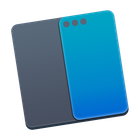
Preme for Windows
Preme for Windows is a powerful desktop customization utility that significantly improves window management and multitasking on the Windows operating system. It allows users to streamline their workflow through intuitive mouse gestures, keyboard shortcuts, and advanced window organization features.
Jai Nattapon
About Preme for Windows
Preme for Windows revolutionizes the way you interact with your open windows, moving beyond the standard Alt+Tab functionality. This lightweight and portable application empowers users with a highly configurable suite of tools designed to boost productivity and desktop efficiency. At its core, Preme enables you to perform complex window operations directly with your mouse or via customized keyboard shortcuts.
Key capabilities include:
Key capabilities include:
- Effortless Window Switching: Instantly switch between applications without lifting your hands from the mouse.
- Snap Windows with Precision: Go beyond the built-in Snap feature, allowing for more granular control over window size and placement on single or multiple monitors.
- Organize and Resize with Gestures: Define custom mouse gestures to quickly resize, move, minimize, and maximize windows.
- Adaptable to Your Workflow: With extensive configuration options, Preme can be tailored to perfectly fit your personal working style.
- Support for Multiple Monitors: Seamlessly manage windows across complex multi-monitor setups.
- Portable and Lightweight: No installation required; run Preme directly from a USB drive or your desktop.
- Powerful Scripting Capabilities: For advanced users, Preme offers scripting support to automate even more intricate tasks.
Pros & Cons
Pros
- Gesture-based window control is intuitive and efficient once learned.
- Extensive customization options for gestures and shortcuts.
- Improved window snapping capabilities, especially for multiple monitors.
- Portable and lightweight with minimal system resource usage.
- Supports scripting for advanced automation.
Cons
- Initial configuration can be time-consuming due to the depth of options.
- Graphical interface is functional but not visually modern.
What Makes Preme for Windows Stand Out
Gesture-Based Window Management
Offers a unique and intuitive way to control windows using natural mouse movements.
High Level of Customization
Allows deep personalization of gestures, shortcuts, and behaviors to perfectly match user needs.
Enhanced Snap Functionality
Provides more control and flexibility for snapping windows compared to the default Windows feature.
Features & Capabilities
13 featuresExpert Review
Preme for Windows Review
Preme for Windows presents itself as a productivity enhancer focused on streamlining window management through alternative interaction methods. The software aims to reduce reliance on traditional methods like Alt+Tab by introducing mouse gestures and extensive shortcut customization.
Upon launching Preme, which can be run portably, users are greeted with a configuration interface that might initially seem dense but quickly proves to be the core of its power. The centerpiece is the ability to define specific mouse gestures to trigger actions. For example, holding a mouse button and drawing a certain pattern can be configured to close the active window, minimize it, or even cycle through open applications. This gesture-based control is a significant departure from conventional window management and, once learned, can demonstrably speed up workflow for users who prefer mouse interaction.
Beyond gestures, Preme offers robust support for keyboard shortcuts. Users can assign key combinations to perform a wide array of functions, from basic window manipulation (move, resize) to more advanced actions like managing windows across multiple monitors or executing scripts. This dual approach caters to different user preferences and allows for a highly personalized control scheme.
The window snapping feature in Preme is an improvement over the native Windows functionality. While Windows allows snapping to halves and quarters, Preme offers more granular control and flexibility, particularly when dealing with multiple displays. This is a notable advantage for users with complex monitor setups who need precise control over window placement.
Preme's configuration is thorough, allowing users to tweak almost every aspect of its behavior. This includes defining sensitivity for gestures, configuring specific actions for different mouse buttons, and setting up application-specific rules. While this level of detail is excellent for power users, it might require some dedicated time initially to set up optimally. The graphical interface for configuration is functional, though perhaps not the most modern in appearance.
Performance-wise, Preme for Windows is lightweight and runs discreetly in the background. Its impact on system resources is minimal, which is crucial for a utility designed to enhance the user experience without introducing lag.
The documentation, while present, could benefit from more illustrative examples, especially concerning the scripting capabilities, which offer significant potential for automation but require a deeper understanding.
In conclusion, Preme for Windows is a highly effective tool for users looking to customize and improve their window management workflow. Its unique gesture control, combined with powerful shortcut customization and enhanced snapping features, offers a tangible productivity boost. While the initial configuration requires some investment, the ability to tailor the software to individual needs makes it a valuable addition for those seeking more efficient interaction with their Windows desktop.















